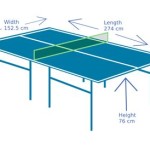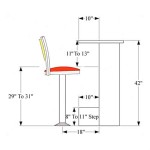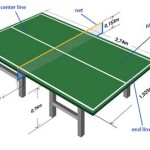Essential Aspects of Raised Bed Vegetable Garden Layout
Raised bed vegetable gardens are an excellent way to grow your own fresh produce, even in limited spaces. By elevating your garden above ground level and filling it with a rich, well-drained soil mix, you can create an optimal growing environment for your vegetables. But before you build your raised bed, it's important to carefully consider its layout to ensure maximum productivity and ease of maintenance.
Size and Shape
The size and shape of your raised bed will depend on the space available, the types of vegetables you want to grow, and the number of plants you need. Generally, raised beds are built with a width between 3-4 feet, which allows you to reach the center of the bed easily from either side. The length can vary depending on your space, but it's important to keep it proportional to the width to ensure adequate air circulation and sunlight exposure.
Orientation
The orientation of your raised bed is crucial for maximizing sunlight exposure. Most vegetables require at least 6 hours of direct sunlight per day, so it's best to position your bed in a north-south direction. This allows sunlight to reach the plants throughout the day, promoting uniform growth.
Soil and Drainage
Raised beds require well-drained soil that retains moisture while allowing excess water to escape. A mixture of topsoil, compost, and peat moss is a good option. You can also add perlite or vermiculite to improve drainage. The soil in raised beds should be amended annually to maintain its fertility and drainage capacity.
Plant Spacing
When planting in raised beds, it's essential to follow the recommended plant spacing for each vegetable. Overcrowding can lead to poor growth, reduced yields, and increased susceptibility to disease. Check the seed packets or consult online resources to determine the appropriate spacing for your specific plants.
Companion Planting
Companion planting is a technique that involves planting different vegetables together to enhance their growth and productivity. Some beneficial companion plant combinations include tomatoes and basil, corn and beans, and carrots and radishes. By planning your raised bed layout to include companion plants, you can create a more efficient and productive garden.
Trellising and Support
Some vegetables, such as tomatoes, cucumbers, and squash, require support to grow vertically. Trellising or staking these plants allows them to reach their full potential, saves space, and improves air circulation. Plan your raised bed layout to accommodate the use of trellises or stakes for your vining vegetables.
Accessibility
Finally, consider the accessibility of your raised bed when planning its layout. Make sure you can easily reach all parts of the bed for planting, watering, weeding, and harvesting. Leave enough space between the bed and surrounding structures or other beds to allow for comfortable movement.
By considering these essential aspects of raised bed vegetable garden layout, you can create an efficient, productive, and accessible space to grow your own fresh, healthy vegetables.

Raised Bed Garden Plan Must Love Lists

Planning Your Vegetable Garden Mapping The Beds

4x8 Raised Bed Vegetable Garden Layout Ideas What To Sow Grow

How To Plan For A Raised Garden Bed Brepurposed

4x8 Raised Bed Vegetable Garden Layout Ideas What To Sow Grow Small Gardens

4x8 Raised Bed Vegetable Garden Layout Ideas What To Sow Grow

Vegetable Garden Layout Planning Bonnie Plants

Raised Bed Garden From A Z What To Know Joe Gardener

Raised Bed Vegetable Garden Plan Modern Frontierswoman

4x8 Raised Bed Vegetable Garden Layout Ideas What To Sow Grow








